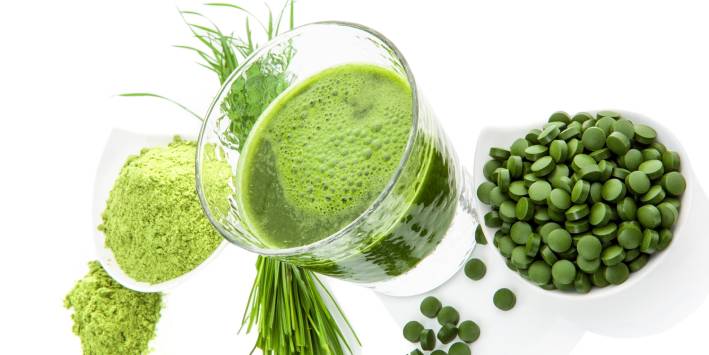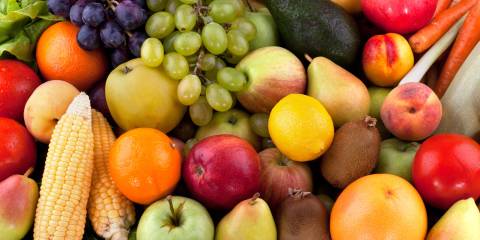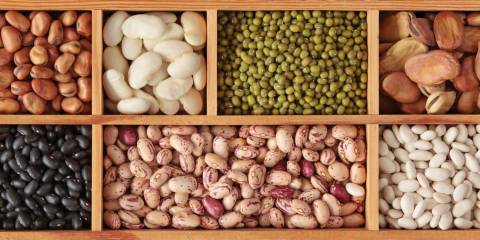The US government recommends eating five to nine servings of fruits and vegetables daily, but most Americans come up short. In fact, only about a quarter of us even eat three servings of vegetables per day. In terms of nutrient density, few foods outrank leafy greens.
Grasses, Algae & Other Superfoods
Yes, we know we should be eating more vegetables. After all, eating plant foods appears to decrease the risk of inflammation, pain, cardiovascular disease, cancer, Alzheimer’s, obesity, autoimmune disease—you name it. But still. We’re busy.
Enter the world of green food supplements: wheat grass and barley grass, spirulina, blue green algae, chlorella, chlorophyll, concentrated alfalfa, and nettle. These “superfoods” are often sold in convenient powders that you mix into water or another drink.
While green foods can’t fully take the place of fruits and vegetables, their high concentrations of nutrients can help us make up for dietary sins or amplify an already healthy diet.
Those who are adverse to green drinks can take green food pills (with about 16 pills equal to one scoop), or seek brands that add enough natural sweeteners and flavorings to resemble juice or a shake.
Green Superfood Benefits
-
Wheat & Barley Grasses
These two top the list of cereal grass greens. Humans can’t digest whole grass, but juiced and powdered extracts offer a highly nutritious concentrate.
In combination with a raw vegan diet, the grasses improved symptoms of fibromyalgia and rheumatoid arthritis.
Wheatgrass tablets increased hemoglobin enough to reduce the frequency of blood transfusions needed for children with blood disease.
Research on dried barley leaf extract suggests that it can lower LDL “bad” cholesterol. People who are allergic to wheat and gluten should use caution with these green foods, though; they may cause a reaction.
-
Algae
Studies show that spirulina and other blue green algae (both sources of protein, nutrients, and antioxidants) improve exercise duration and performance, decrease inflammation, reduce cholesterol, and support the immune system. A recent study of spirulina grown in deep-sea water showed that spirulina grown in deep-sea water showed more "immune activation activities" than that of spirulina grown in conventional sea water.
Chlorella—a green algae and concentrated source of chlorophyll—may offer similar effects, but the research has been less enthusiastic. Seek good sources: Algae can be contaminated with microbes and heavy metals.
-
Chlorophyll & Alfalfa
All green plants contain the green pigment of photosynthesis called chlorophyll, but most supplements are made with concentrated alfalfa. Scientists don’t consider chlorophyll essential for humans, but it is an important component of a healthy plant-based diet.
Green foods’ “blood-building” effects are often attributed to chlorophyll—its chemical structure closely resembles hemoglobin—however, it’s more likely due to the interconnection of several nutrients in greens. Proponents claim chlorophyll also acts as a natural deodorant.
Alfalfa in its whole form offers vitamins, minerals, and plant estrogens. Phytoestrogens support hormonal health in women—allaying menopause complaints, strengthening bones, and possibly helping to prevent some cancers.
-
Nettle & Other Herbs
For quick-hit nutrition, herbalists turn to nettle leaves and other herbs like oat straw and horsetail. Research is slim; however, nettle remains one of our highest and most bioavailable sources of plant calcium.
Oat straw provides more mineral density than oatmeal. Horsetail is so high in silica that pioneers used it to scour pots and polish metal!
Traditional teas don’t extract many minerals, but according to herbalist Susun Weed, a super-infusion of nettle contains as much as 500 milligrams of calcium per cup, plus other nutrients. Place one ounce of dried herbs in a quart jar (or French press pot), fill to the top with near boiling water, stir, cover, and let steep for four or more hours. Strain, pressing as much tea from the herbs as possible.





